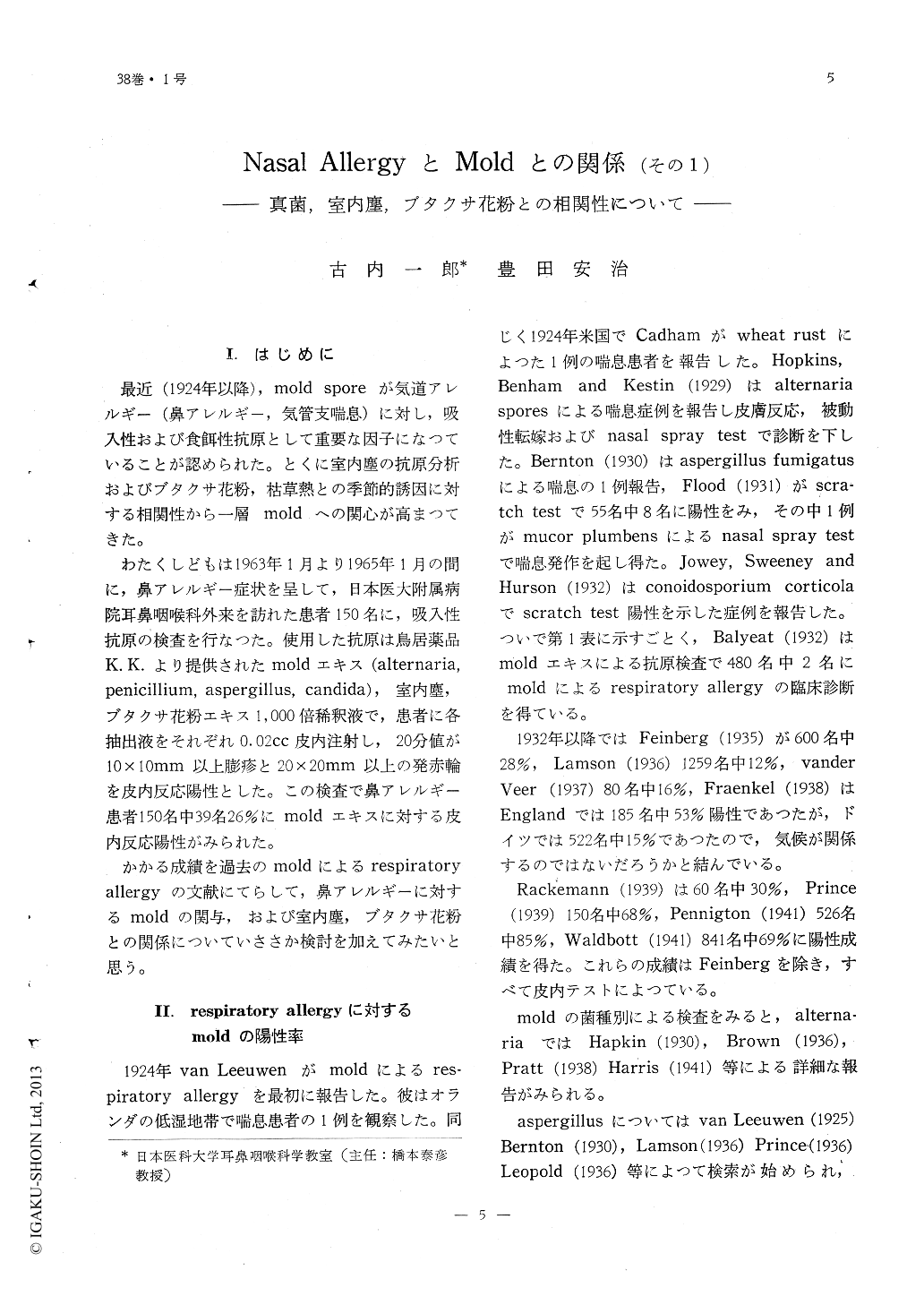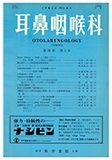Japanese
English
- 有料閲覧
- Abstract 文献概要
- 1ページ目 Look Inside
Ⅰ.はじめに
最近(1924年以降),mold sporeが気道アレルギー(鼻アレルギー,気管支喘息)に対し,吸入性および食餌性抗原として重要な因子になつていることが認められた。とくに室内塵の抗原分析およびブタクサ花粉,枯草熱との季節的誘因に対する相関性から一層moldへの関心が高まつてきた。
わたくしどもは1963年1月より1965年1月の間に,鼻アレルギー症状を呈して,日本医大附属病院耳鼻咽喉科外来を訪れた患者150名に,吸入性抗原の検査を行なつた。使用した抗原は鳥居薬品K. K. より提供されたmoldエキス(alternaria,penicillium,aspergillus,candida),室内塵,ブタクサ花粉エキス1,000倍稀釈液で,患者に各抽出液をそれぞれ0.02cc皮内注射し,20分値が10×10mm以上膨疹と20×20mm以上の発赤輪を皮内反応陽性とした。この検査で鼻アレルギー患者150名中39名26%にmoldエキスに対する皮内反応陽性がみられた。
Intradermal tests were performed in 150 patients affected with nasal allergy by using mold extracts of alternalia, penicillium, aspergillus and candida, as antigens. Each antigen was made up into 1: 1,000 aquaeous solution. The test was positive in 39 potients, 26%. With the first three types of molds as mentioned positive tests were shown in following order: Alternalia, 13 patients, 8.6%; penicillium, 8 patients, 5.3%; aspergillus, 8 patients, 5.3%. Of the 85 patients tested with candida 20, 23.5%, showed a positive reaction. The literature is reviewed for references in sensitivity towards house-dusts and their connection to the ragweed pollen season.

Copyright © 1966, Igaku-Shoin Ltd. All rights reserved.


